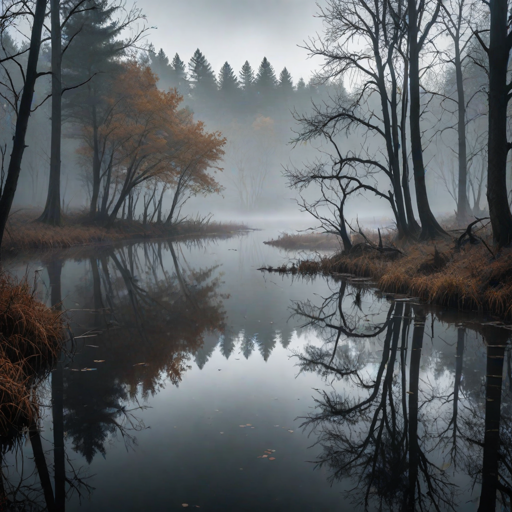Across diverse cultures and throughout history, the phenomenon known as Ignis Fatuus, or “Will-o’-the-Wisp,” has captured the imagination and sparked tales of wonder and mystery. This elusive flickering light, often seen dancing over marshes, swamps, and boggy areas on dark nights, goes by various names, including Jack-o’-Lantern and Foolish Fire, each reflecting the unique interpretations and folklore surrounding its mysterious nature.
In English-speaking countries, the term “Will-o’-the-Wisp” evokes imagery of a mischievous creature, perhaps a sprite or fairy, carrying a lantern and leading unsuspecting travellers off their path. Similarly, “Jack-o’-Lantern” originates from English folklore, where it’s associated with eerie lights flickering over marshes and graveyards. Legend has it that these “Jack-o’-Lanterns” were spirits or goblins using lanterns to lead travellers astray, often into dangerous or haunted territories. “Foolish Fire” underscores the deceptive attraction of the phenomenon, warning those who follow its lights that they may be acting foolishly or falling prey to supernatural trickery.
But beyond names and folklore, Ignis Fatuus is a natural phenomenon with scientific explanations. It’s often attributed to the combustion of gases emitted by decomposing organic matter, such as methane, phosphine, or hydrogen sulfide. These gases can ignite spontaneously upon contact with oxygen in the air, creating the illusion of floating flames. This scientific understanding, however, does little to diminish the captivating mystique of Ignis Fatuus in the realm of myth and legend.
Indeed, Ignis Fatuus is just one aspect of worldwide folklore that intertwines with other supernatural elements. Fairies, for instance, are often associated with these mysterious lights, believed to inhabit mystical realms accessed through portals in remote natural locations. Legend tells of encounters with fairies using Ignis Fatuus to guide travellers into enchantment or mischief, or even to abduct them into the fairy realm.
Moreover, tales of Ignis Fatuus intersect with beliefs in portals to other worlds, where certain natural features like caves, standing stones, or bodies of water are thought to offer passage to realms inhabited by fairies, spirits, or mythical creatures. These gateways serve as both mystical landmarks and cautionary symbols of the unknown.
In modern interpretations of folklore, sightings of UFOs (Unidentified Flying Objects) often become entwined with legends of Ignis Fatuus and other supernatural phenomena. These mysterious aerial phenomena are perceived as extraterrestrial spacecraft or visitors from distant worlds, blending ancient tales of celestial beings with contemporary encounters with the unknown.
Conversely, darker aspects of folklore introduce the notion of malevolent entities like demons or evil spirits, attributing unexplained phenomena such as Ignis Fatuus to their sinister influence. These beings are often associated with cursed places, forbidden knowledge, or supernatural phenomena, serving as cautionary symbols of danger and temptation.
Despite science offering explanations for many mysteries, Ignis Fatuus and its connection to alleged phenomena still captivates. These tales offer glimpses into the unknown, the mysteries of the universe and the depths of the human psyche.



Leave a Reply